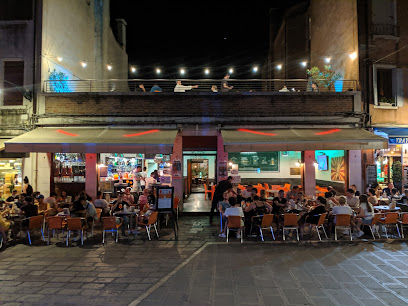
Discover the Historic Charm of Loggia e Odeo Cornaro
Experience the enchanting Loggia e Odeo Cornaro, a historical landmark in Padua that showcases exquisite Renaissance architecture and rich cultural heritage.
Nestled in the heart of Padua, Loggia e Odeo Cornaro is a breathtaking historical landmark that enchants visitors with its stunning architecture and rich cultural significance. A must-see for any tourist!
A brief summary to Loggia e Odeo Cornaro
- Via M. Cesarotti, 37, Padua, Province of Padua, 35123, IT
- +393351428861
- Visit website
Local tips
- Visit during the golden hour for stunning photography opportunities.
- Check the local events calendar for exhibitions or performances at the Loggia.
- Combine your visit with a stroll through nearby parks and cafes for a full day experience.
Getting There
-
Car
If you are traveling by car, head to Padua. Use the A4 motorway and take the exit for Padova Est or Padova Ovest, depending on your starting point. Follow the signs for the city center, and then navigate to Via M. Cesarotti. You can find parking options nearby, such as Parcheggio Piazza delle Erbe or Parcheggio Via Vigonovese. Once parked, Loggia e Odeo Cornaro is a short walk from the parking area.
-
Train
For travelers using public transport, take a train to Padua Central Station (Stazione di Padova). From the station, exit and head towards the bus terminal located next to the station. Board bus number 6 or 12, which will take you closer to the city center. Disembark at the stop 'Piazza delle Erbe'. From there, it is a 10-minute walk to Loggia e Odeo Cornaro located at Via M. Cesarotti, 37.
-
Bus
If you are already in Padua and want to use the local bus system, you can take buses 1, 2, or 3 from various parts of the city. Make sure to get off at 'Piazza delle Erbe'. From the square, proceed on foot towards Via M. Cesarotti. The site is approximately a 10-minute walk from the square.
-
Walking
If you are already within walking distance in Padua, simply navigate to Via M. Cesarotti, 37. The Loggia e Odeo Cornaro is a well-known historical landmark, so it should be easy to locate by asking locals or using a map application on your smartphone.
Discover more about Loggia e Odeo Cornaro
Iconic landmarks you can’t miss
Loggia e Odeo Cornaro
0.0 km
Experience the enchanting Loggia e Odeo Cornaro, a historical landmark in Padua that showcases exquisite Renaissance architecture and rich cultural heritage.
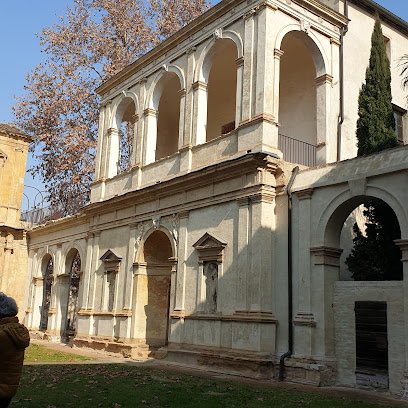
District of the Ancient Jewish Ghetto
0.7 km
Discover the rich history and culture of the District of the Ancient Jewish Ghetto in Padua, a tranquil neighborhood steeped in heritage.
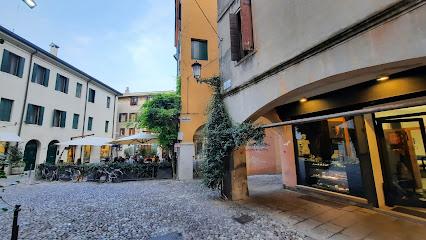
Piazza dei Signori
0.9 km
Discover the historical charm and vibrant culture of Padua at Piazza dei Signori, a stunning square surrounded by architectural wonders.
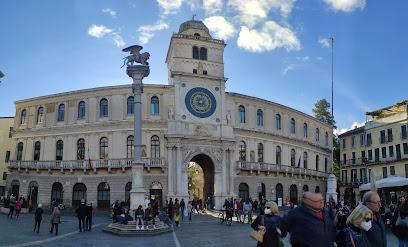
Piazza Eremitani
0.9 km
Explore the heart of Padua at Piazza Eremitani, a vibrant square rich in history and culture, surrounded by stunning architecture and lively atmosphere.
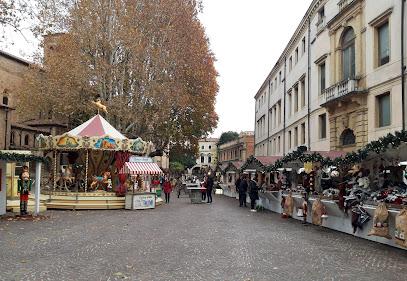
Liviano Palace
1.1 km
Discover the elegance of Liviano Palace, a Renaissance architectural masterpiece and a symbol of Padua's rich educational heritage.
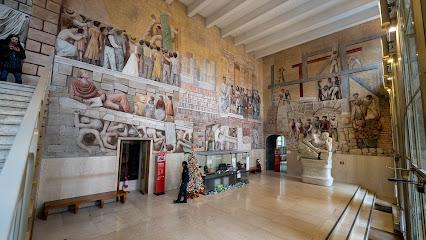
Giardini dell'Arena
1.1 km
Explore the serene beauty of Giardini dell'Arena in Padua, a community garden that offers a peaceful escape and a glimpse into local culture.
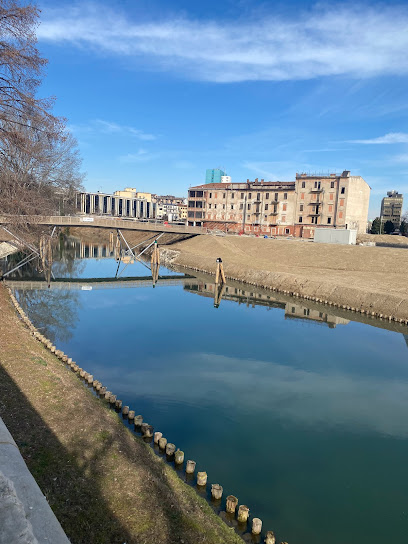
Cat Bastion
1.6 km
Explore the historical significance and breathtaking views at Cat Bastion, a Renaissance gem in the heart of Padua, Italy.
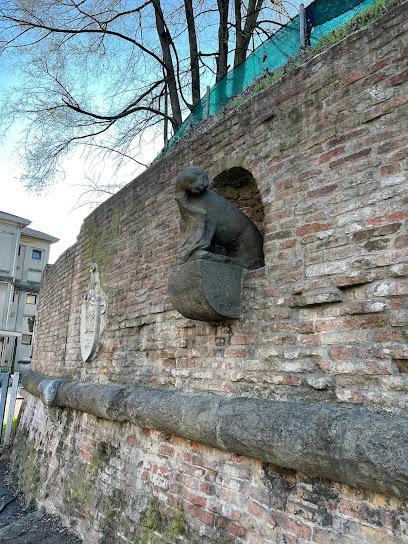
Parco Urbano Termale
9.6 km
Experience the serene beauty and therapeutic wonders of Parco Urbano Termale, a must-visit park in the heart of Abano Terme, Italy.
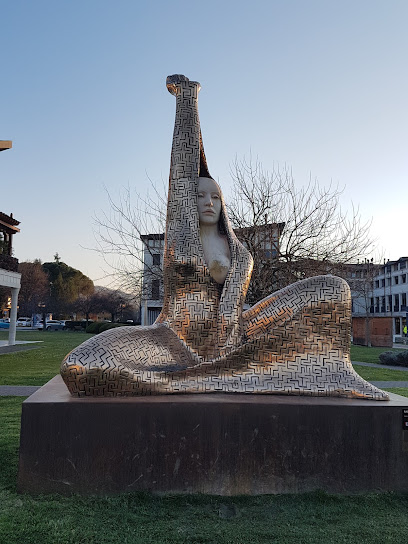
Borgo fluviale di Pontemanco
12.6 km
Explore the serene beauty and rich history of Borgo Fluviale di Pontemanco, a cultural landmark in Italy's picturesque Province of Padua.
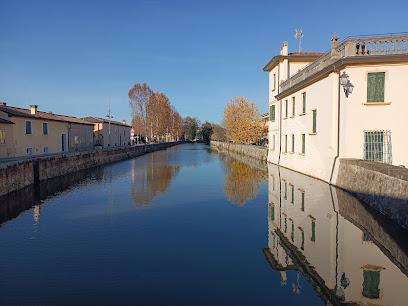
Villa Duodo
20.4 km
Discover the enchanting Villa Duodo in Monselice, a historical landmark that showcases Renaissance architecture and picturesque gardens, ideal for history and architecture lovers.
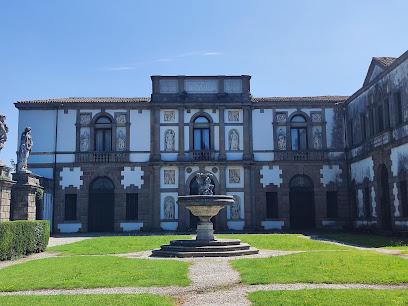
Termine - Eretto come confine nel 1375 tra i territori di Padova e Venezia.
23.9 km
Explore the historic Termine boundary, marking the divide between Padova and Venice, and immerse yourself in the rich cultural heritage of the Veneto region.
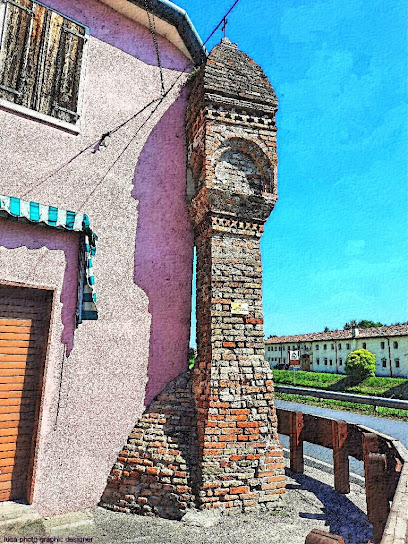
Cittadella
28.5 km
Explore Cittadella, a medieval gem in the Province of Padua, where history, culture, and stunning architecture await your discovery.
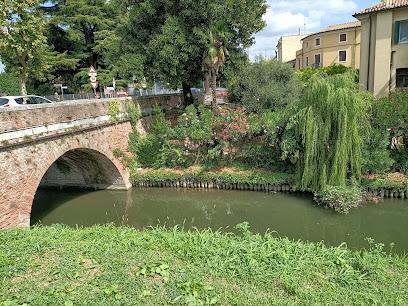
Gianni Aricò, Fontana dei mestieri, 1986, statue bronzee
29.3 km
Explore the artistry of Venice at Gianni Aricò's Fontana dei mestieri, a bronze statue celebrating craftsmanship and cultural heritage.
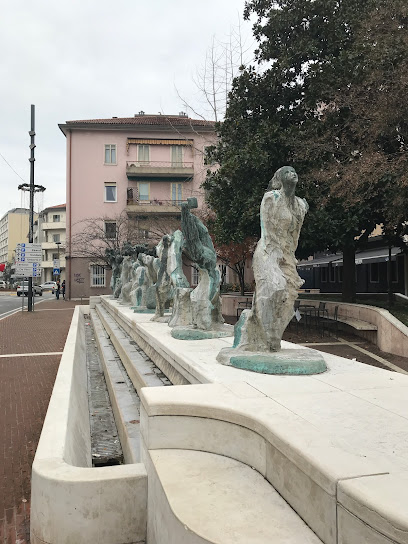
Veneto Segreto
29.6 km
Uncover the secrets of the Veneto region at Veneto Segreto, your ultimate visitor center in Vicenza, where culture, history, and adventure await.
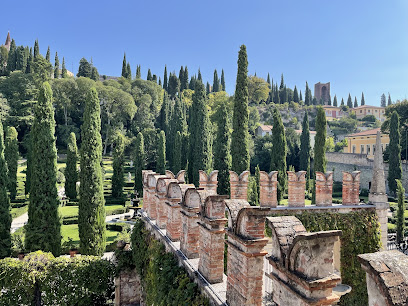
Castelfranco Veneto
30.2 km
Explore Castelfranco Veneto, a picturesque Italian town rich in history, stunning architecture, and delightful local cuisine nestled in the Province of Treviso.
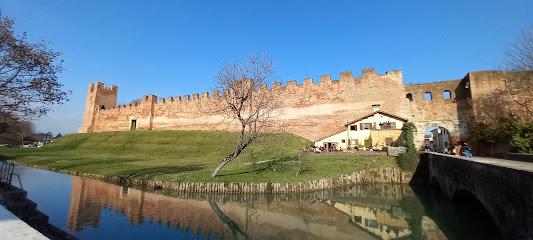
Unmissable attractions to see
The Basilica of St. Anthony
0.2 km
Explore the Basilica of St. Anthony in Padua, a stunning architectural marvel and a center of spiritual significance with rich history and art.
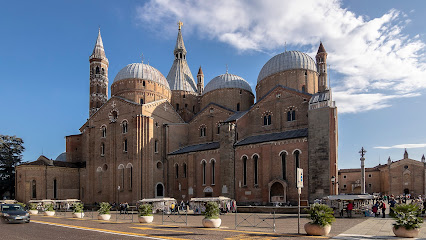
Convento del Santo - Frati Minori Conventuali
0.2 km
Discover the serene beauty and rich history of Convento del Santo, a stunning monastery in Padua, Italy, adorned with exquisite frescoes and tranquil gardens.
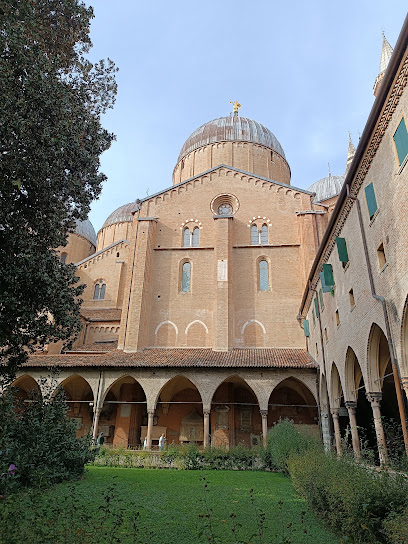
Chiostro del Capitolo
0.2 km
Experience the tranquil beauty and historical significance of Chiostro del Capitolo in Padua, a must-visit gem for every traveler.

Piazza del Santo
0.2 km
Explore Piazza del Santo in Padua, Italy - a vibrant town square filled with history, stunning architecture, and local culture.
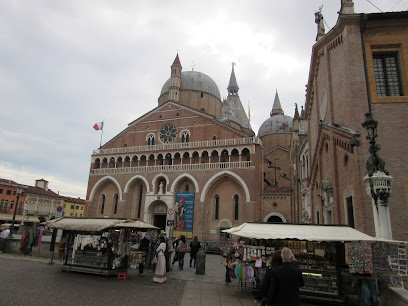
Chiostro del Generale
0.2 km
Explore the serene beauty and rich history of Chiostro del Generale, a stunning historical landmark in the heart of Padua, Italy.
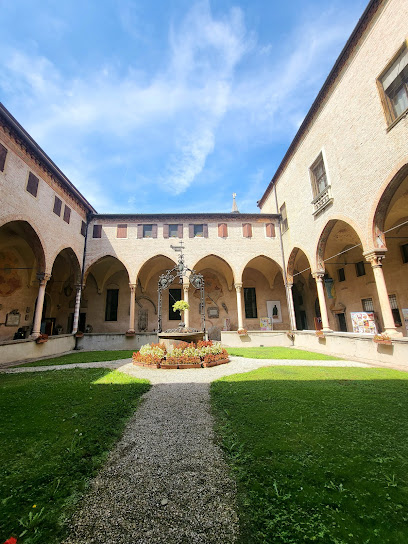
Scoletta del Santo
0.2 km
Explore the enchanting Scoletta del Santo in Padua, a captivating chapel adorned with stunning frescoes and rich spiritual history.

Confraternity of St. Anthony of Padua
0.2 km
Explore the serene Confraternity of St. Anthony of Padua, a historical sanctuary that blends spirituality with stunning architectural beauty in the heart of Padua.

Giardino di Palazzo Giacomini Romiati
0.3 km
Explore the tranquil Giardino di Palazzo Giacomini Romiati in Padua, a serene garden perfect for relaxation and historic charm amidst lush greenery.
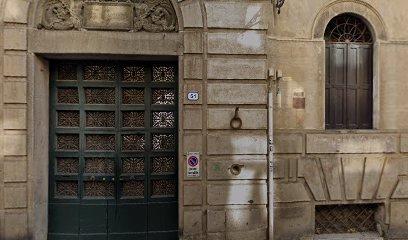
MUSME
0.4 km
Discover the fascinating journey of medical history and technology at MUSME, Padua's premier science museum, perfect for all ages.
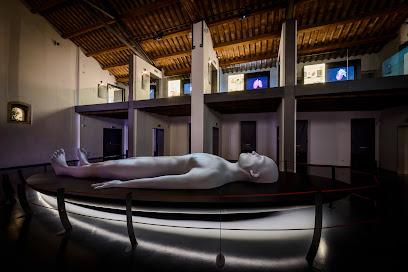
University of Padua Botanical Garden
0.4 km
Explore the historic University of Padua Botanical Garden, a serene UNESCO World Heritage site with diverse plant life in the heart of Padua, Italy.

Piazza Antenore
0.5 km
Discover the enchanting Piazza Antenore in Padua, a historical gem bustling with culture, art, and local flavors in the heart of Italy.
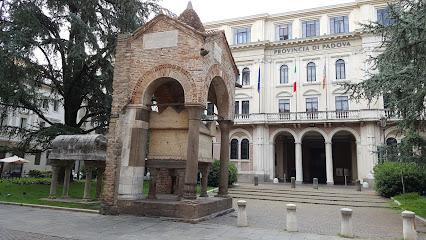
Tomb of Antenor
0.5 km
Explore the historical wonder of the Tomb of Antenor in Padua, a legendary site steeped in myth and rich in architectural beauty.
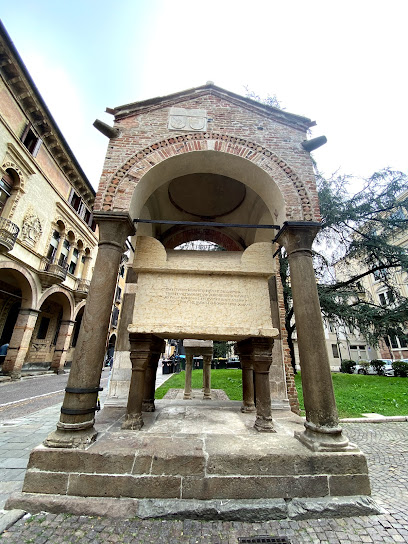
Prato della Valle
0.5 km
Explore Prato della Valle, Italy's largest square in Padua, where history meets beauty amidst lush gardens and captivating architecture.
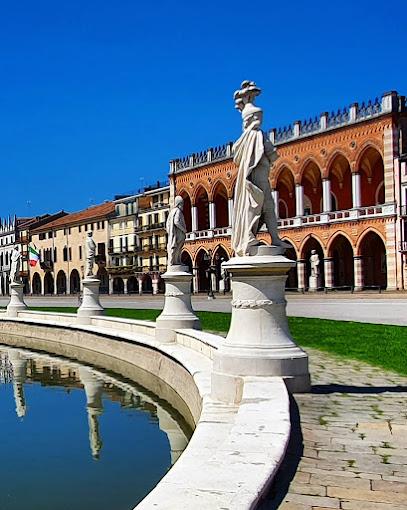
Museum of Precinema
0.6 km
Discover the captivating world of pre-cinema at the Museum of Precinema in Padua, where the art of visual storytelling comes to life.
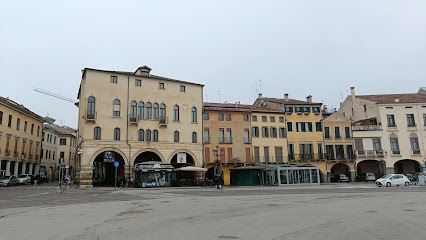
Parish of Saint Sophia
0.6 km
Discover the stunning Parish of Saint Sophia in Padua, a captivating blend of history, art, and spirituality within a serene ambiance.
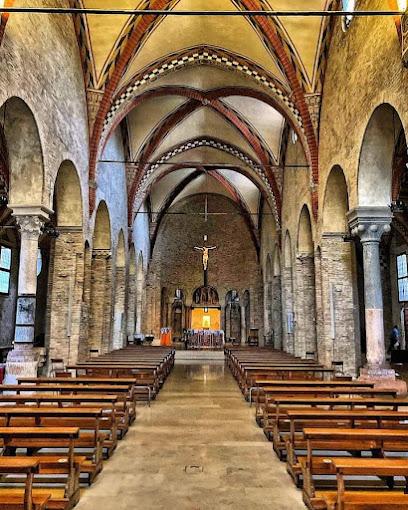
Essential places to dine
Ristorante Storie D'Amore
15.5 km
Experience the romance of Italy at Ristorante Storie D'Amore - where every meal is a celebration of love and culinary excellence.
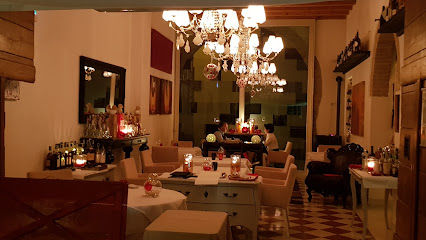
Restaurant Taverneta A La Scuea
29.9 km
Experience exquisite seafood dining at Taverneta A La Scuea, where Venetian tradition meets culinary innovation in an unforgettable setting.

All'Antico Girone
30.1 km
Discover authentic Italian flavors at All'Antico Girone, where every dish tells a story of culinary excellence in Castelfranco Veneto.
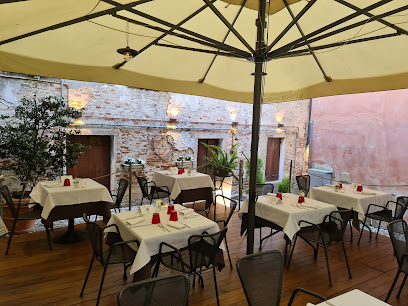
AMAROPERSONALCHEF
30.2 km
Discover the essence of Italian cuisine at AMAROPERSONALCHEF in Castelfranco Veneto - where tradition meets flavor.

Feva
30.2 km
Discover the exquisite flavors of Italy at Feva in Castelfranco Veneto – where fine dining meets exceptional service.
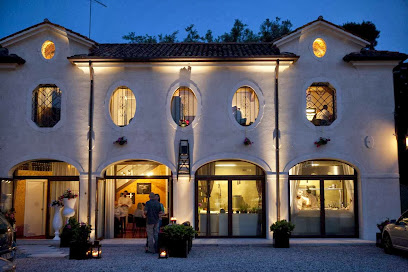
Eclectique
30.2 km
Discover Eclectique: A Mediterranean restaurant offering exquisite seafood dishes and craft cocktails in Castelfranco Veneto.
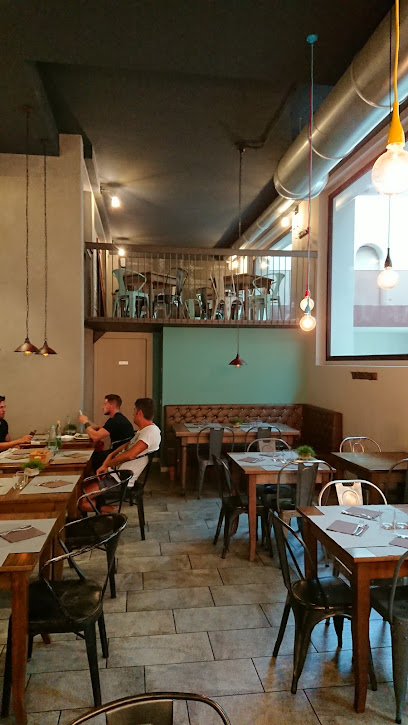
Osteria Veneto's
30.9 km
Discover authentic Italian flavors at Osteria Veneto's in Vicenza—an unforgettable dining experience awaits you.
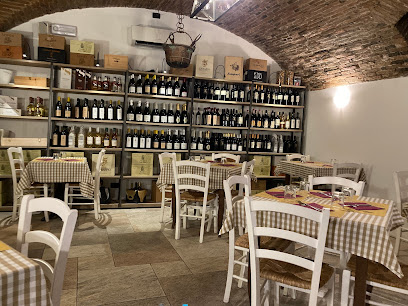
Ristorante Barbesin
32.1 km
Experience authentic Italian cuisine at Ristorante Barbesin in Castelfranco Veneto - where tradition meets flavor.
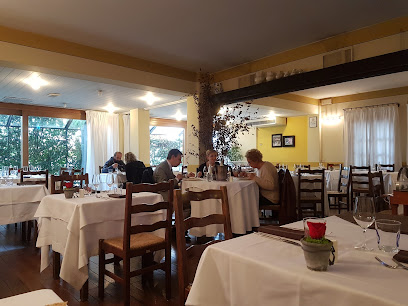
Ristorante Assaggi Beccofino
32.7 km
Discover authentic Italian flavors at Ristorante Assaggi Beccofino in Mogliano Veneto - where culinary tradition meets modern elegance.
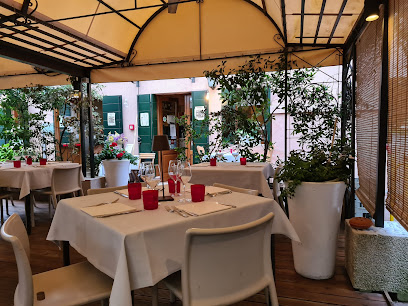
Origine- La Casa del Campanaro
32.9 km
Experience authentic Italian flavors at Origine - La Casa del Campanaro in Mogliano Veneto, where tradition meets exquisite taste.
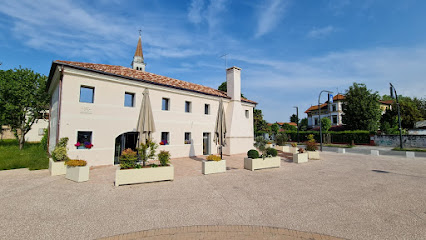
AGLI AMICI DOPOLAVORO VENEZIA
34.1 km
Experience authentic Italian cuisine at AGLI AMICI DOPOLAVORO VENEZIA - where every meal is a celebration of flavors amidst Venice's stunning backdrop.
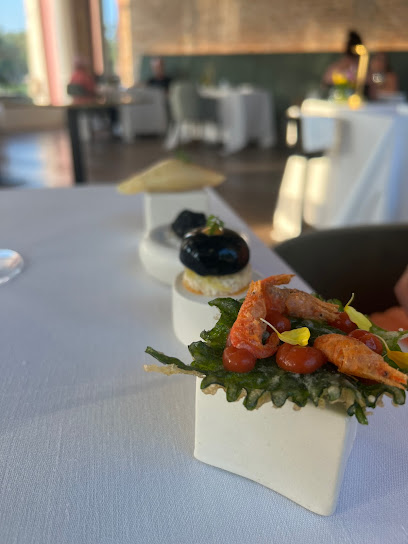
Aromi Restaurant
34.2 km
Experience fine dining at Aromi Restaurant in Venice, where exquisite cuisine meets stunning views in a captivating atmosphere.

Sagra Rooftop Restaurant and bar
34.3 km
Discover exquisite Italian cuisine at Sagra Rooftop Restaurant with breathtaking views over Venice's skyline, offering a unique dining experience.
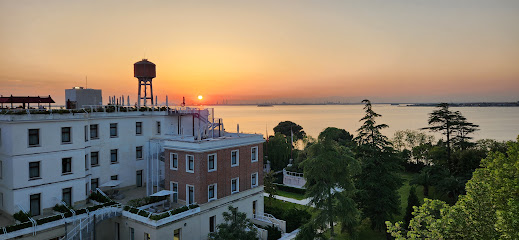
Bacaromi Restaurant
34.3 km
Discover authentic Venetian flavors at Bacaromi Restaurant on Giudecca Island – where culinary excellence meets breathtaking views.
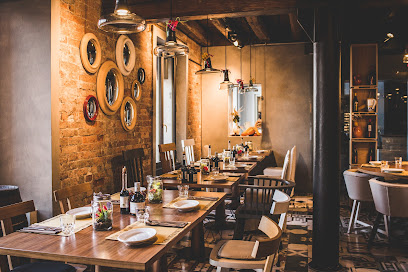
Osteria Da Codroma
34.3 km
Experience authentic Italian and seafood cuisine at Osteria Da Codroma in Venice's picturesque canalside setting.
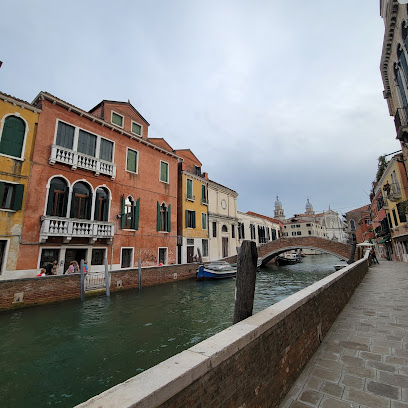
Markets, malls and hidden boutiques
Nave de Vero
26.5 km
Explore Nave de Vero in Venice, a vibrant shopping mall featuring a diverse range of stores, delicious dining, and family-friendly entertainment.
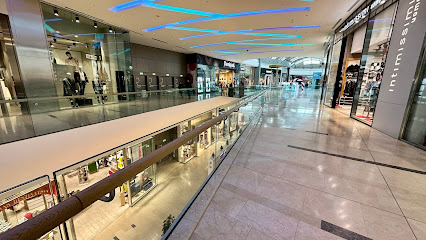
Galleria Barcella
29.8 km
Discover Galleria Barcella, a vibrant shopping mall in Venice, offering a unique blend of local culture and diverse retail experiences.
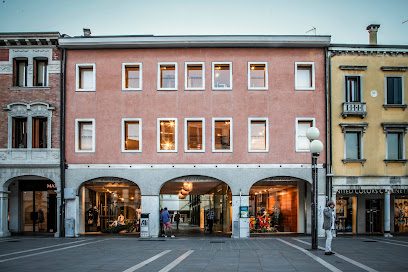
Le Barche mall
29.9 km
Explore the vibrant Le Barche Mall in Venice for a delightful shopping experience with top brands and local treasures.
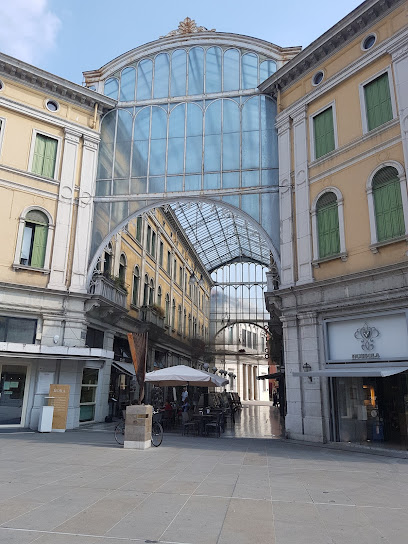
Marialuisa Benetti Bride
30.0 km
Discover exquisite bridal gowns and accessories at Marialuisa Benetti Bride, Venice's premier bridal shop for a dream wedding experience.

Shopping Day
31.1 km
Discover a vibrant shopping experience at Shopping Day in Castelfranco Veneto, offering fashion, food, and local flair in one dynamic location.

I Giardini del Sole
31.4 km
Discover I Giardini del Sole, a vibrant shopping mall in Castelfranco Veneto, offering diverse retail options and delightful dining experiences.
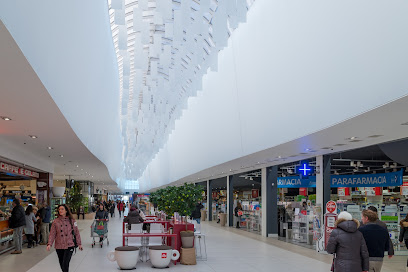
rialto bridge
34.1 km
Discover the enchanting beauty and vibrant culture at the Rialto Bridge, Venice's iconic landmark for shopping and stunning views.
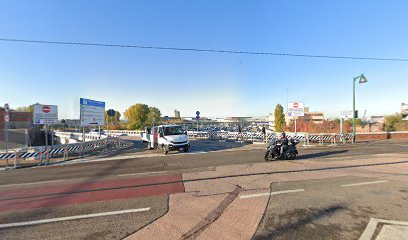
The Venice choker
34.3 km
Explore the enchanting jewelry collections at The Venice Choker, where Venetian artistry meets elegant design in a captivating shopping experience.
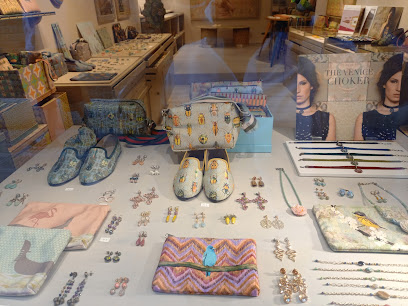
Negozi di souvenir
34.3 km
Explore Negozi di Souvenir in Venice for unique handcrafted treasures, from masks to glassworks, capturing the city's enchanting spirit.
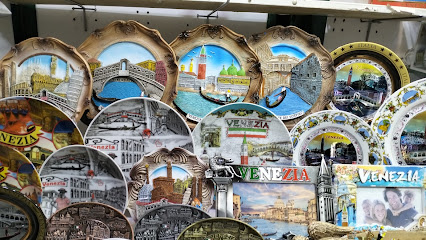
Il Grifone
34.5 km
Discover exquisite handcrafted leather goods at Il Grifone, a premier destination for unique Venetian artistry and craftsmanship.
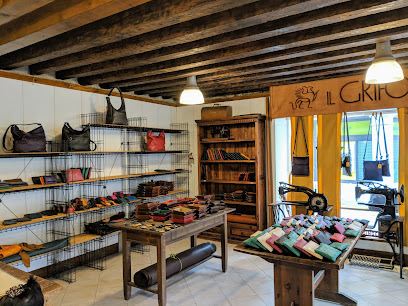
Italian Style
34.5 km
Explore the essence of Italian craftsmanship at Italian Style Boutique in Venice, where every handbag tells a story of elegance and artistry.
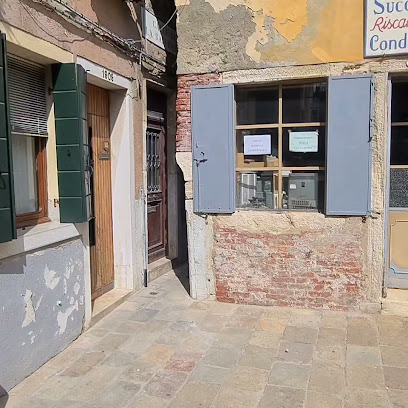
Artigianato Veneziano
34.5 km
Discover the essence of Venice through exquisite handmade crafts at Artigianato Veneziano, a unique souvenir store showcasing local artistry.
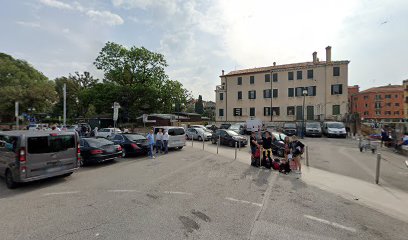
Itaca Art Studio di Monica Martin
34.5 km
Explore Itaca Art Studio in Venice for unique art, crafts, and collectibles that capture the essence of Italian creativity.
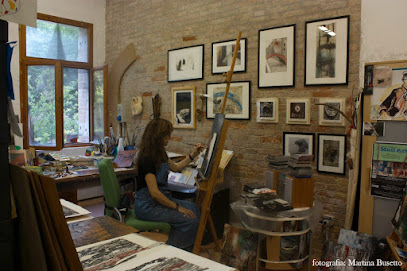
Boutique Legami
34.5 km
Explore Boutique Legami, a charming gift and stationery shop in Venice, offering unique souvenirs and artisanal crafts that reflect the city's spirit.
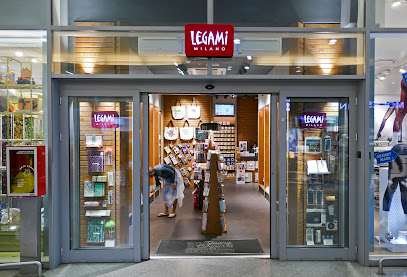
Libreria antiquaria Segni Nel Tempo
34.7 km
Explore Libreria Antiquaria Segni Nel Tempo, Venice's charming antique bookstore filled with rare books and literary treasures.
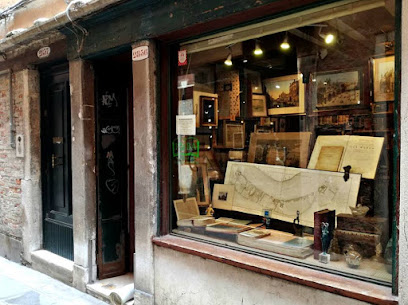
Essential bars & hidden hideouts
Il Gottino - Wine Bar
0.7 km
Discover the charm of Il Gottino, a wine bar in Padua, offering exquisite local wines and a cozy atmosphere perfect for relaxation.
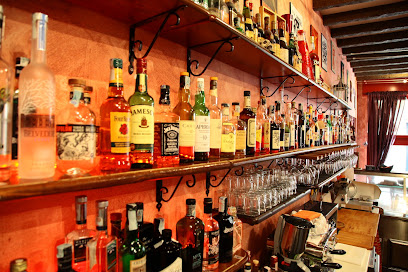
Laboratorio ALchemico
0.8 km
Experience the perfect blend of innovative cocktails and gourmet cuisine at Laboratorio ALchemico in Padua, a must-visit destination for food and drink lovers.
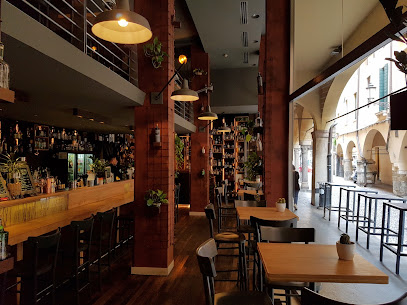
Blind Spot - Cocktail Bar Venezia
29.4 km
Discover the vibrant nightlife of Venice at Blind Spot Cocktail Bar, where exquisite drinks and a lively atmosphere await.

L'Altro Verdi
29.4 km
Experience the authentic Venetian nightlife at L'Altro Verdi, where delightful drinks and a warm atmosphere await you in the heart of Venice.
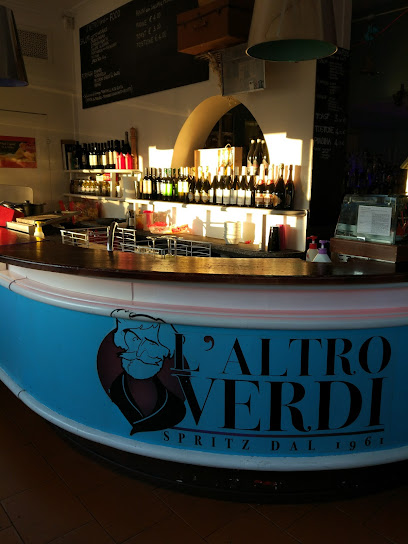
Whisky Bar
29.5 km
Discover a sophisticated whisky experience in the heart of Venice, where every sip tells a story and every visit is memorable.
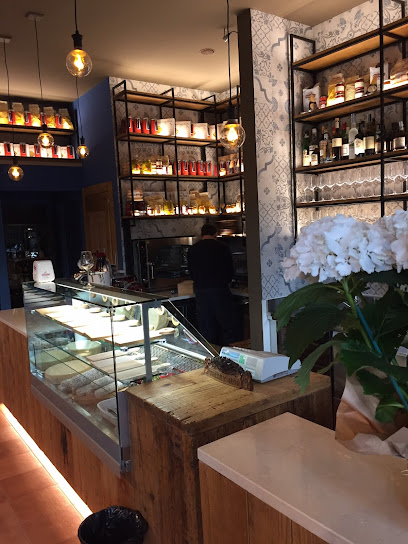
Marais Wine and Cocktails
29.8 km
Discover the vibrant atmosphere of Marais Wine and Cocktails in Venice, where exquisite drinks and lively ambiance create unforgettable memories.
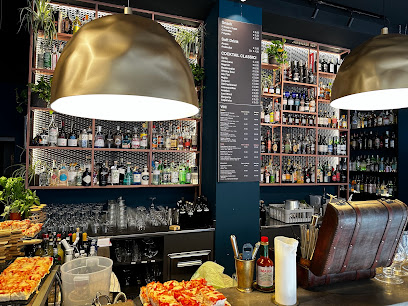
Vèrmot Americaneria
30.1 km
Experience vibrant nightlife at Vèrmot Americaneria, where expertly crafted cocktails meet delicious snacks in the heart of Castelfranco Veneto.
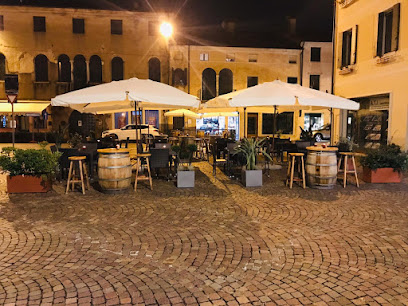
Skyline Rooftop Bar
34.3 km
Experience breathtaking views and exquisite cocktails at Venice's Skyline Rooftop Bar, a luxurious escape above the enchanting canals.
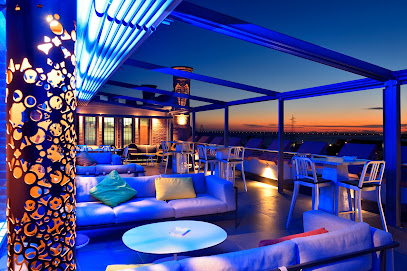
Bar Due Ruote
34.3 km
Discover the charm of Bar Due Ruote in Venice, where friendly service meets authentic Italian drinks and breathtaking canal views.
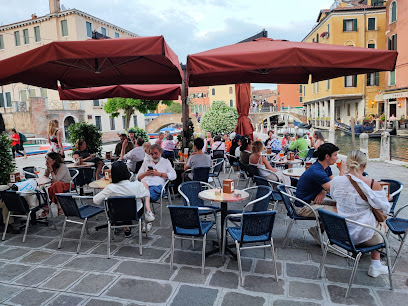
BAR Da Giosia chiosco
34.4 km
Discover the vibrant atmosphere and exquisite drinks at BAR Da Giosia, a must-visit bar in the heart of Venice for every traveler.
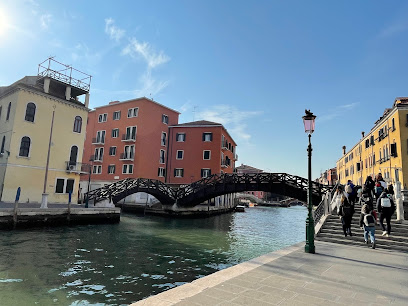
Bacareto da Lele
34.5 km
Discover Bacareto da Lele: Venice's charming wine bar offering exquisite local wines and delicious cicchetti in a cozy atmosphere.
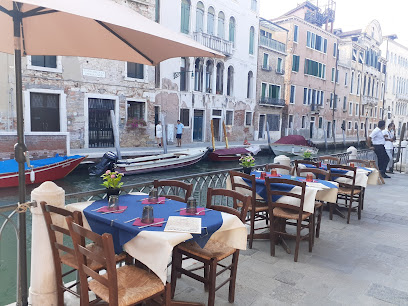
Arcicchetti Bakaro
34.5 km
Discover the authentic taste of Venice at Arcicchetti Bakaro, where delightful cicchetti and local wines create unforgettable moments.
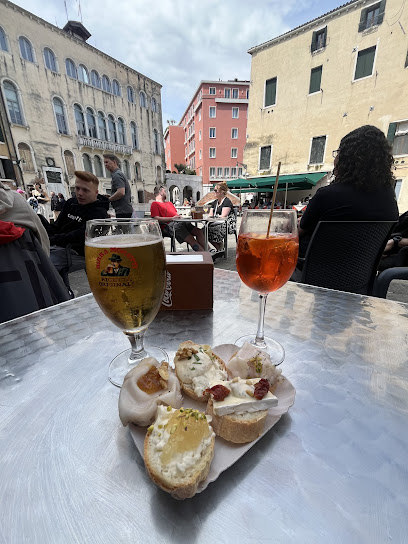
Experimental Cocktail Club Venice
34.5 km
Discover the exquisite blend of innovation and tradition at the Experimental Cocktail Club in Venice, where each cocktail tells a story.
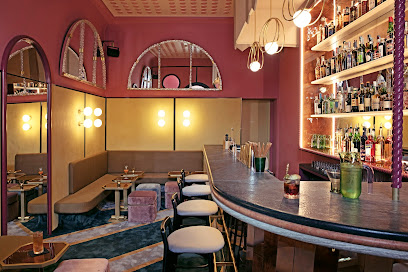
Al Fortino
34.6 km
Experience the essence of Venetian nightlife at Al Fortino, where exquisite drinks and local charm come together in a cozy bar setting.
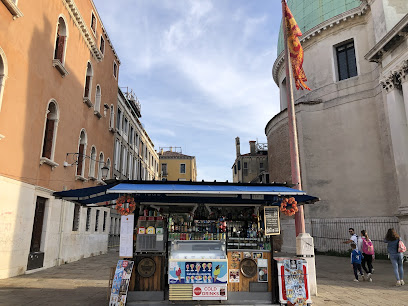
Margaret DuChamp
34.6 km
Discover the vibrant atmosphere and local flavors at Margaret DuChamp, a beloved pub in the heart of Venice's Campo Santa Margherita.
